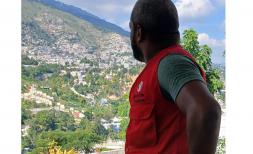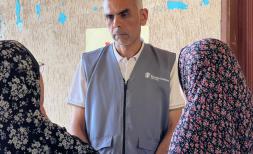How does climate change cause hunger?
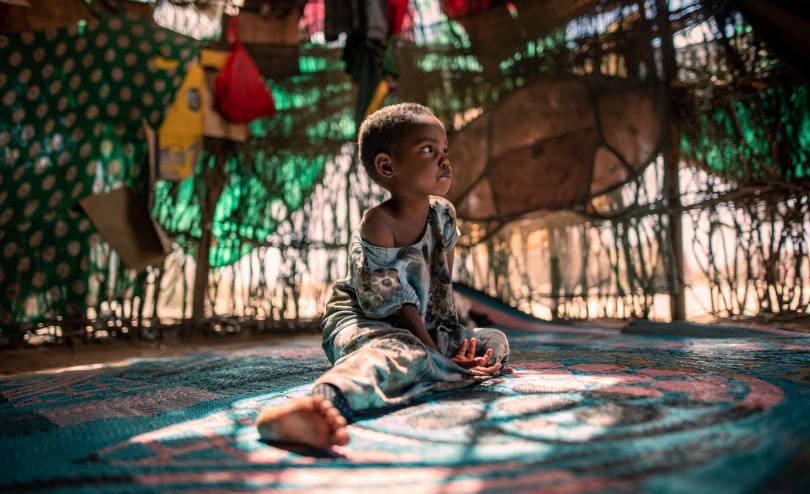
Three-year-old Maryan, who suffers from malnutrition, at her home in a drought-hit village in Garissa County, northern Kenya. Tommy Trenchard / Save the Children.
Around the world, 153 million children are projected to face food insecurity this year. Escalating conflicts and the spiralling cost-of-living are combining with the deepening climate crisis to leave millions of children facing an ever-growing threat of hunger.
Frequent and recurring climate shocks – such as drought, flooding, and cyclones – are repeatedly destroying homes, schools and livelihoods, decimating farming and livestock, disrupting water sources, causing food price spikes, and driving population displacement. The climate crisis is also impacting the nutritional value and diversity of food, causing long-term land degradation and undoing decades of hard work on child rights and community resilience building.
It is therefore no surprise that extreme weather events were the main catalyst driving hunger and malnutrition for about 27 million children in 2022, marking a 135% increase compared to the previous year. Currently, as many as 1.9 billion (or four out of every five) children are living in areas that are at high risk of experiencing at least one extreme climate event per year. Around 820 million are exposed to heatwaves, 920 million to water scarcity and 400 million to cyclones.
Donate to our Children's Emergency Fund
The overlapping impacts of climate change, conflict and inequality are putting a huge strain on families’ ability to access food, resulting in a projected 345 million people in 82 countries facing acute food insecurity this year. But together we can help children bite back against the hunger crisis.
What is Save the Children doing to combat climate change and hunger?
Save the Children is supporting farming families to grow food sustainably and for the long-term, even in the face of our climate crisis. We also future-proof communities by providing tools to help them break the hunger cycle and make them more resilient against future climate shocks.
For example, we’re providing families with drought resistant seeds, rehabilitating water supplies, supplying farmers with tools for agriculture and livestock management, protecting mangroves to prevent flooding, teaching flood resilient farming practices and giving cash grants to families.
Donate to our Children's Emergency Fund
Through cash grants, families can buy food and other essentials, as well as build basic safety nets. With financial safety nets, families don’t have to take desperate measures that put children’s safety and futures at risk, like pulling them out of school. It also allows families to invest in their own solutions to the crisis and break the poverty cycle.
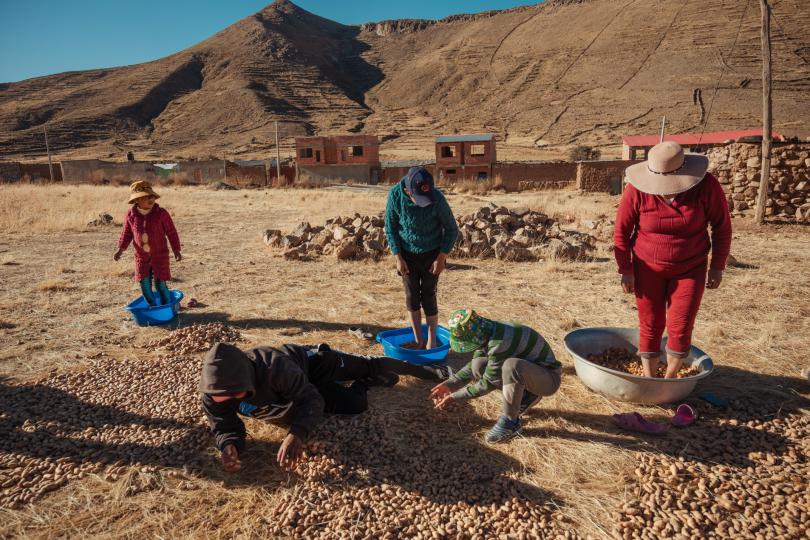
Leydy, 6, Jhon, 11, and their mother Nimia, 30, step on frozen potatoes while Alfredo, 21 and Jheyson, 11, pick fresh ones. The process produces chuño, a traditional Bolivian dish that helps preserve potato harvests for longer. Save The Children has helped the family with their baking business. Adriana Loureiro Fernandez / Save The Children.
READ MORE: HOW IS SAVE THE CHILDREN TAKING ACTION AGAINST THE CLIMATE CRISIS?
In 2022, Save the Children and our partners supported 943,560 children and their families to improve and protect their livelihoods, especially those affected by climate change. Interventions to support families and their livelihoods included cash and voucher assistance, village savings groups (including women's savings groups), and graduation programs.
Why anticipating a crisis is key to combatting hunger
Save the Children closely monitors forecasts and potential risks, such as El Niño, and is working with partners to help communities anticipate, prepare for and prevent the worst possible humanitarian impacts.
Anticipating a crisis saves lives and makes funding go further. This includes helping communities spot early warning signs for risk, clearly defining triggers for action, and then putting in place mechanisms that will safeguard children from harm and protect their futures.
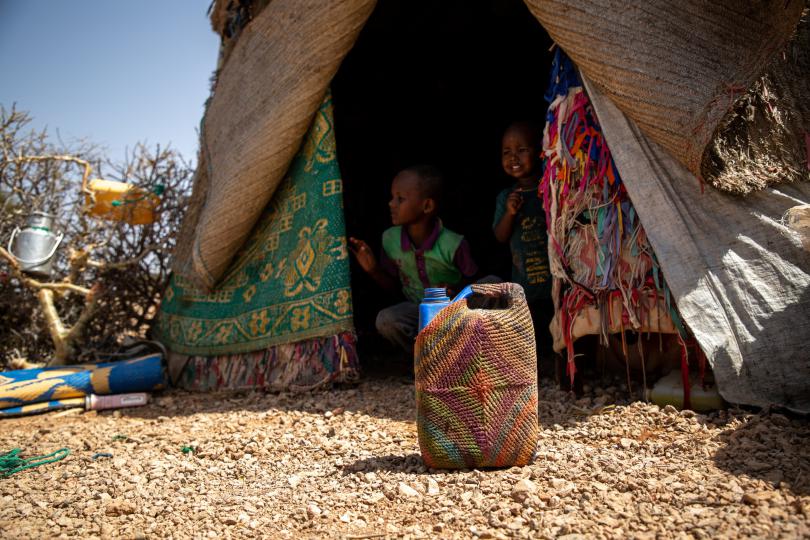
Many families in drought-hit communities in Somalia already faced a daily struggle to get by. Now, after the rains failed for the fourth time in a row, crops and animals’ grazing land have turned to dust. Mustafa Saeed / Save the Children.
READ MORE: EL NIÑO: WHAT IS IT AND HOW WILL IT IMPACT CHILDREN AROUND THE WORLD?
Unfortunately, funding often comes after all the warning signs have been ignored and a crisis is in full swing. Getting funding in anticipation of a crisis is one of our key goals.
Hunger-related crises can often be predicted months in advance when the rains fail or when crop production has been disrupted due to fighting. In such cases, we should not need to wait until a child is severely malnourished before we spring into action. We can prevent it, provided support is made available.
Help children protect their futures from hunger by supporting Save the Children’s Emergency Fund today.
